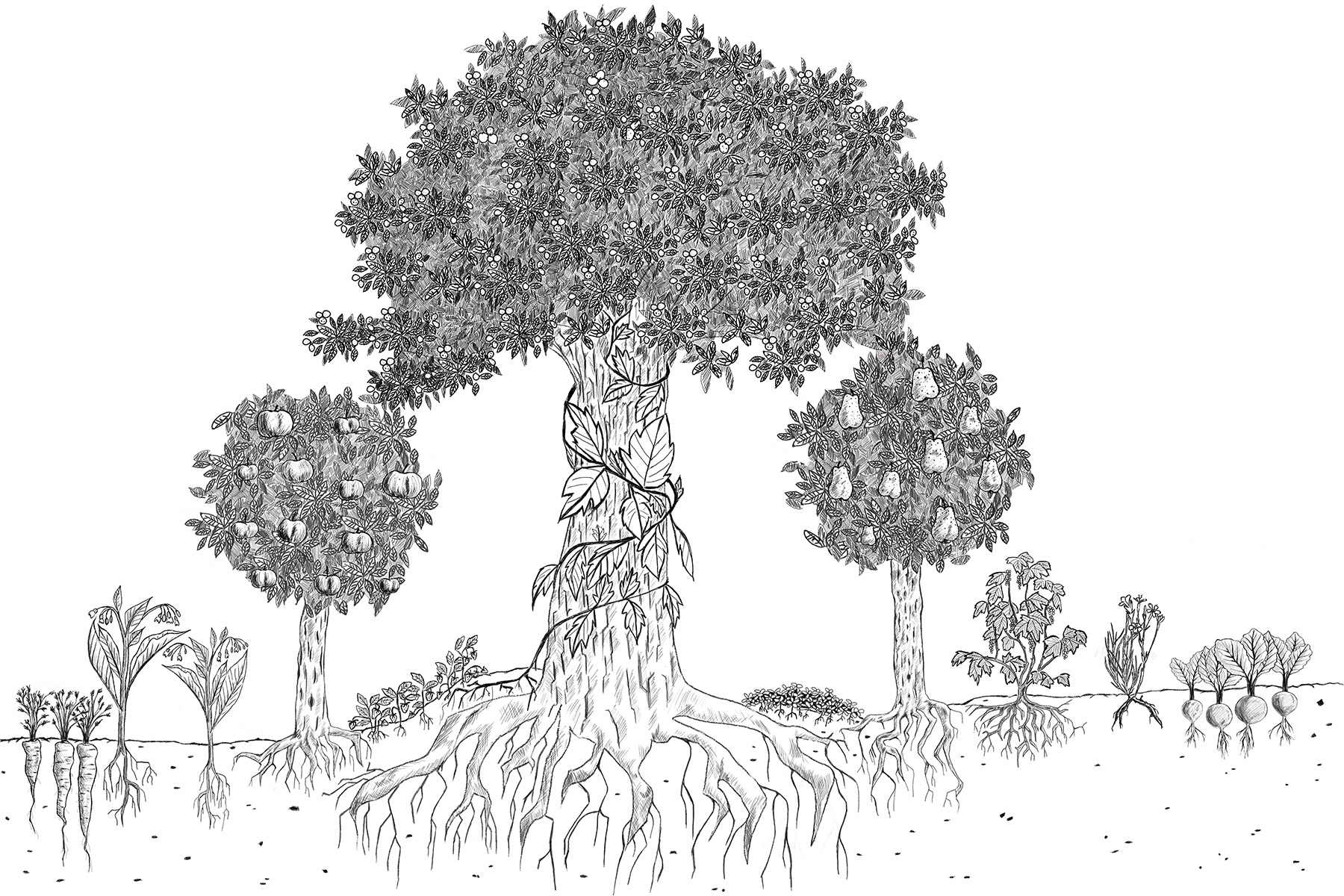
HongIk ECO Farms wants to create an exemplary Food Forest system
Imagine a world where the forest is your grocery store. Plump juicy berries, fresh greens, and savory mushrooms growing all around, just waiting to be picked. Step into a world where nature’s bounty and urban farming unite in a harmonious dance – welcome to the realm of food forests. These enchanting spaces blend the best of both worlds, offering a wonderful mix of wholesome food and eco-friendly goodness. As an urban farmer and food enthusiast, I can’t help but be captivated by the magic of food forests. In this blog, we’ll explore what makes food forests so special, their whimsical layers, and how they nurture a sense of community while promoting wellness and sustainability.
What is a Food Forest?
Functioning as forest farms, food forests bring together fruit and nut trees, shrubs, herbs, and other perennial delights in a woodland setting. Inspired by nature’s wisdom, these self-sustaining ecosystems require minimal maintenance while providing a diverse array of edible treats.
At the heart of a food forest lies its captivating layers, each contributing to the overall splendor and productivity:
Canopy Layer: Towering fruit and nut trees create the forest’s roof, casting cooling shade and offering a haven for birds and critters.
Understory Layer: Just below the canopy, smaller fruit trees and berry bushes bask in the dappled sunlight, adding to the delightful ensemble.
Shrub Layer: This middle crew consists of currants, gooseberries, and their companions, adding more deliciousness and inviting pollinators to join the festivities.
Herbaceous Layer: On the dance floor of the food forest, low-riding plants like herbs, vegetables, and groundcovers flourish under the warmth of sunlight.
Root Layer: Below the ground, edible root crops such as potatoes and yams work their magic, fortifying the nutritional offerings of the food forest.

Sustainability, Biodiversity, and Community Empowerment
Food forests produce more than food, playing a crucial role in:
- Sustainability: Food forests effortlessly replenish themselves, reducing the need for external inputs and promoting a balanced ecosystem.
- Biodiversity: The rich tapestry of plant life attracts diverse species, fostering a thriving habitat for wildlife and pollinators.
- Reduction of CO2: As carbon-absorbing champions, food forests contribute to mitigating climate change by sequestering carbon dioxide.
- Water Conservation: With their well-designed layers, food forests efficiently manage water resources and reduce the need for irrigation.
Food forests are lush ecosystems that will make you think about food differently. By embracing the wonder of food forests, we can reconnect with nature, foster community resilience, and relish the bountiful harvest they offer. As we embark on this deliciously green adventure, let us savor the goodness of food forests while building a closer-knit community dedicated to wellness, sustainability, and a thriving planet.
